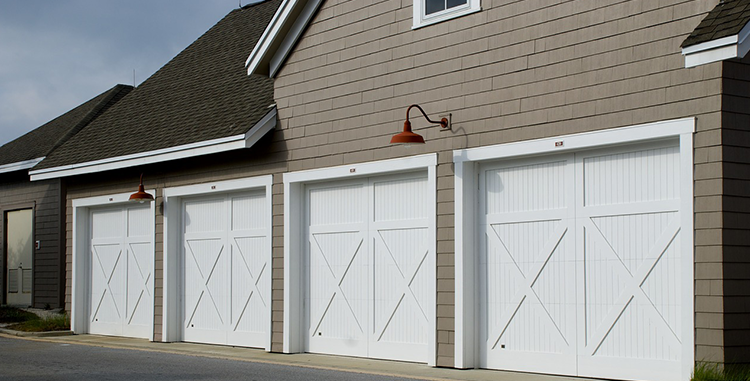Ever wonder how your garage door works or what individual components are called and what they do? Learning about the anatomy of your garage door may not be the most interesting discovery you make today, but it can be a big help if something goes wrong.
Having a basic understanding of how different parts work together will help you better diagnose problems as they arise. You might even avoid having to call a repair company to fix a small problem for you. On the other hand, if a serious issue arises, you’ll better recognize the need for a technician and will know to avoid attempting to fix something you’re not qualified to fix.
Tracks
Two parallel tracks run vertically alongside your garage door opener attached to the wall and then over (horizontally) towards the motor hanging from the ceiling. The rollers, attached to the garage door, are securely locked in place inside the track. The track guides the door up and down. If something, like a rock or debris, is wedged in the track, it can cause issues. Inspect the track regularly to ensure the path is always left clear.
Rollers
The rollers are attached to the sides of the door and placed into the tracks. Since the rollers bear the weight of your entire garage door when the door is open, they need to be strong and replaced as needed. If one or more rollers start to wear out, the door could catch, screech or rattle, or start to fall out of the track as it moves.
Door Panels
The door is broken up into different panels that fold as the door opens or closes. Depending on the type of door you have, you may be able to replace one of these panels individually if it’s damaged. Common signs of damage to wood doors (if not well maintained) include rotting, warping, and cracking. Steel doors can eventually rust if they aren’t cleaned regularly, and aluminum doors may corrode over time.
Hinges
Hinges connect individual garage door panels to others above and below. They allow the door to bend as it opens or closes. If a hinge breaks, it could affect your entire garage door system, so be sure to have it repaired or replaced as soon as you notice it.
Lock Bar
As its name suggests, this bar “locks” the door in place when it’s closed so it can’t be opened by force from outside of your garage. The lock usually consists of two horizontal bars that position themselves into slots in the track when the door is closed to keep it securely shut. If these bars become misaligned, they won’t effectively lock your garage door. Lube this mechanism regularly and have it repaired if it breaks or shifts out of place.
In our next article, we’ll continue talking about other important components of your garage door system, the part each one plays, and what can happen if one of them breaks.
If you need any of the above components on your garage door system repaired, give us a call. WD Door proudly serves across the state of Iowa. We offer quality residential and commercial garage door repair and installation services for our customers.

